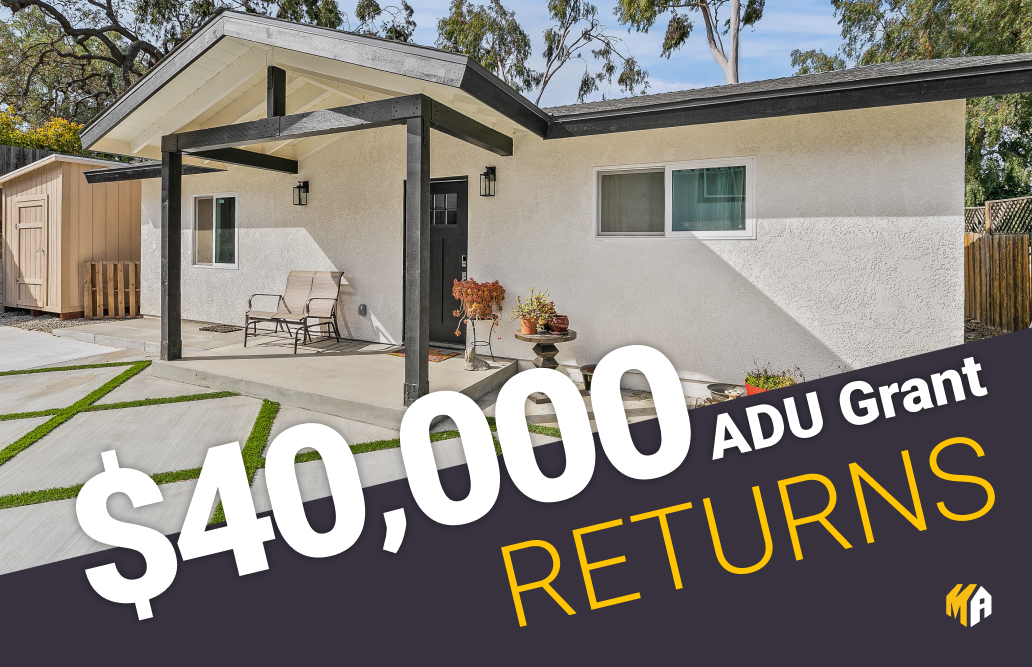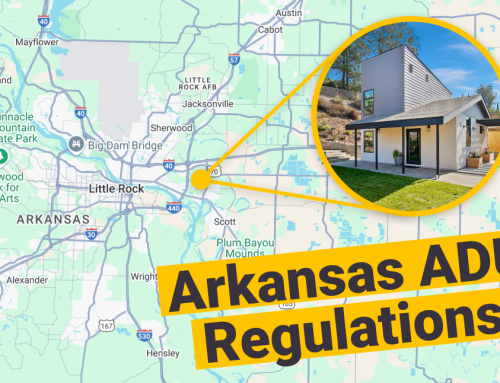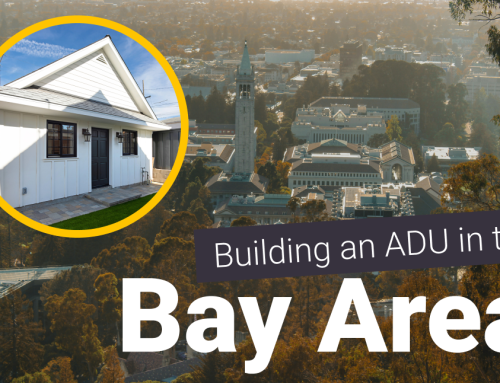The CalHFA ADU Grant is back!
The state government has approved $25 million to be used for the popular, yet short lived, $40,000 ADU Grant that shook up California back in 2022.
While this is amazing news for homeowners that missed out on the last round of funding, there are some new stipulations that you should be aware of. Let’s dissect.
What is the CalHFA ADU Grant?
If you’re new to the world of ADUs, the CalHFA $40k ADU Grant is funding provided to low to mid-income homeowners in California that want to build an ADU on their property.
The grant was first introduced in early 2022 offering $25k. But, the grant didn’t gain widespread attention until the organization upped the grant amount to an incredible $40k, which makes quite a dent in the cost to build an ADU.
Why was it short-lived? Even with a whopping $100 million available in the pool, the grant was quickly sucked dry.
The California government and CalHFA have been teasing the grant’s revival for some time.
There was some back and forth for over a year, including the government issuing and rescinding $50 million shortly after in early 2023 when AB 157 was passed.
CalHFA was finally granted the $50 million again in July 2023, and has chosen to assign half of the funding towards reopening the ADU grant, much to the excitement of homeowners that missed out on the money last year.
Qualifications for the CalHFA $40k ADU Grant

To be approved for the grant, the following qualifications must be met:
- You must own the property on which you want to build your ADU
- You must work with a CalHFA approved lender or non-profit organization
- You must sign an affidavit certifying that you currently occupy the house
- You must live on the property while the ADU is being built
- You cannot exceed CalHFA’s income limits
Not much has changed from the last round of funding except for CalHFA’s income limits.
To qualify, household income must be less than 80% of the median income of your jurisdiction. If you are married, lenders will look at you and your spouse’s combined income. Other adult extended family members are excluded.
This is quite a cut from the initial round of funding, but this change is likely to ensure the grant is going to those who need it most. Hopefully, this will also slow the drain of the $25 million grant pool. You can view the full list of income limits for each county below.

What can the ADU grant be used for?
The grant can ONLY be used for predevelopment costs of building your ADU, also known as soft costs.
Predevelopment costs include:
- Consulting fees
- Design fees
- Permitting fees
- Structural evaluations for conversions
- Soil tests
- Site preparation
The grant can also be used for non-recurring closing costs.
The ADU grant CANNOT be used for construction costs including labor and materials. This may seem counterintuitive as construction costs make up the majority of the total cost of building an ADU.
However, depending on your project, predevelopment costs may exceed $40k.
How to Apply for the ADU Grant
To receive the grant, you must apply through one of CalHFA’s approved lenders or non profit organizations and receive a construction loan.
This is for CalHFA to ensure that the funds are actually being used for ADU projects. Working with your lender, you need to prepare the following documents:
- Copy of construction loan deed of trust
- Construction loan approval documents
- Escrow instructions
- Loan estimate or closing disclosure
- Itemization of pre-development costs
Your chosen lender or organization will prepare the loan and escrow account in which the grant will be deposited.
The Future of the ADU Grant

We wouldn’t be surprised if applications cap by the end of the year, but that doesn’t mean the grant is gone for good. With such high demand, we have high hopes that the government will allocate more funds to CalHFA in the near future.
If you haven’t started the ADU process yet, we highly recommend getting started now so that you’ll be ready when applications open again. Maxable has connected thousands of homeowners to local ADU designers and builders over the years. Every ADU professional in our network has been heavily vetted to ensure you get matched with trusted partners with years of ADU experience.
Tell us a bit about your ADU goals and hit the ground running on your project today.
FAQ
Is the ADU grant taxable?
Yes, the full amount received will be taxed.
Can I still get the ADU grant if I haven’t started my project yet?
Yes, to an extent. Neighborhood Housing Services is working with individuals to reserve the grant for those that have not yet secured a loan for their project.
Is it too late to apply for the ADU grant?
No, but spots are filling up fast!
With $25 million in the pool, the grant will only go to the first 625 homeowners that get approved. Just one day after the portal was opened, one non-profit organization processing applications has already capped at 275 awardees.
What happens if the ADU grant runs out?
CalHFA is currently advocating for more funding from the state government to open more applications for the grant. Several of the organizations on CalHFA’s list of approved lenders are already at capacity, but we encourage you to join their waitlists in the event that some awardees rescind their applications.
What is CalHFA?
CalHFA, or the California Housing Finance Agency, is a state agency dedicated to providing affordable homeownership and rental housing opportunities for Californians.
Established in 1975, CalHFA offers a range of financial assistance programs, including low-interest rate mortgage loans and down payment assistance, to help residents achieve their housing goals. Through partnerships with lenders, local governments, and nonprofits, CalHFA plays a crucial role in addressing housing affordability challenges across California.
Can investors apply for the ADU grant?
At this time, no, the grant is not for investors. CalHFA requires grant recipients to sign an affidavit that states they will live on the property on which the ADU is being built.
CalHFA has also lowered the income limits, limiting the grant only to homeowners that make less than 80% of the median income for each region.







